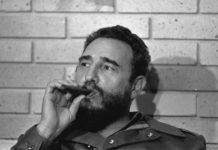The popular story of how most of Ireland gained independence from Britain has the virtue of simplicity.
It goes something like this. Most Irish people accepted British rule until Easter 1916, when a small group of rebels took on the might of the empire. They failed but the execution of their leaders inspired a nationwide rebellion which within a few years had brought that empire to its knees. Then, depending on what side of the Civil War (or the border) people were on, things got a bit messier.
The story of labour was a footnote at best, with the 1913 Lockout merely a prelude to 1916. Class barely came into the narrative at all, except perhaps in the shape of a few Anglo-Irish landlords. The food shortages of 1917, the conscription crisis of 1918 and even the general election of that year, events which arguably radicalised far more people than Easter Week, rarely received a mention.
Anyone who suspects the real story of Ireland’s revolution was a little more complex should read John Borgonovo’s new book. Borgonovo examines the dynamics of social change in Cork city, which did not rise in 1916 but already had a rich history of radical activity. Looking at developments from the ground upwards Borgonovo convincingly argues that it was World War One, just as in the rest of Europe, that was the central event that transformed Ireland.
Some resent the inclusion of the war as part of the Irish national story. But Borgonovo is not one of the ‘poppygandists’ who have embraced a weird Great War nostalgia. Instead he shows how wartime censorship and repressive legislation were used to clampdown on activists, creating resentment.
Deficit spending created massive inflation and led to demands for wage rises and hence to strikes; wartime arbitration encouraged the growth of trade unions (the ITGWU’s revival after 1913 being part of this process). In 1917 food rationing terrified a population only 50 years removed from the Famine and saw labour and republican activists create local food committees outside of state control.
Hostility to the Government contributed to clashes between Cork youth and the police throughout 1917, with British troops being regularly called out to quell riots in the city centre. By the time the British Government attempted to introduce conscription in 1918, large sections of the population were in open defiance.
To explain how this happened, Borgonovo tells the story of Cork’s rival home rule machines, its IRB and Volunteer organisations, its Unionists and Protestant population, and the city’s trade unionists and employers. He introduces readers to a host of local characters, many of them hitherto lost to national history. 
Borgonovo explains how the fall-out over their non-participation in the Easter Rising impacted on local republicans preparations for future struggles. There is interesting detail too on disputes between republicans and so-called ‘separation women’ (women receiving money because of a relative’s service in the Crown forces) which were a feature of many Irish towns in this period. He also describes a major moral panic concerning visiting American sailors and venereal disease. This is simply one of the best studies to date of Ireland in the period of war and revolution.





